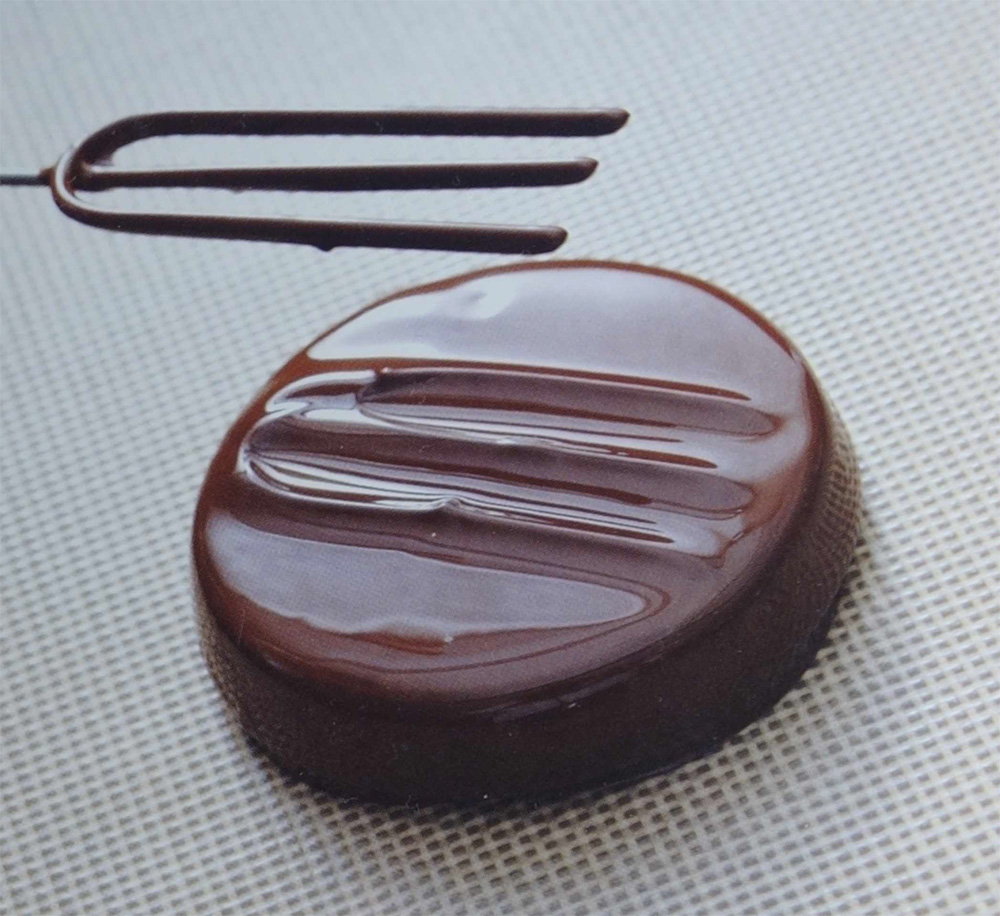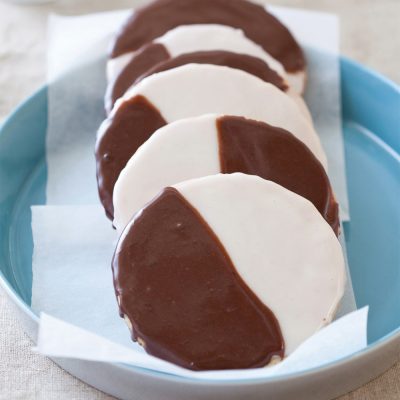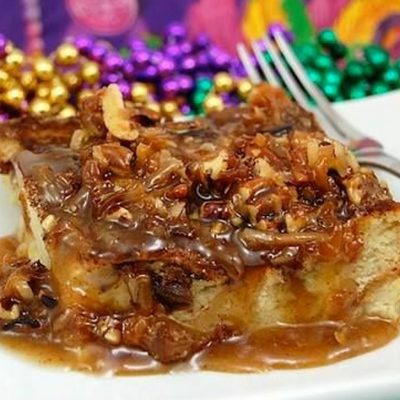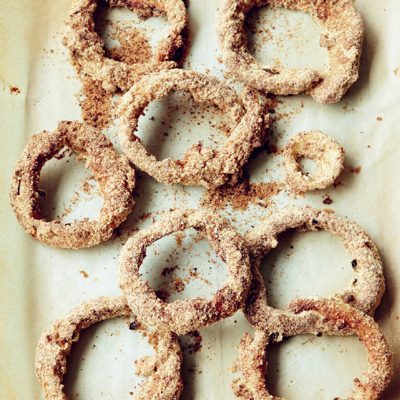Ingredients
-
1¼ cups + 2 tbsp (272 g) Granulated Sugar
-
¼ cup + 3 tbsp (100 g) Water
-
¾ cup + 1 tbsp (272 g) Fondant Icing
-
1 tbsp (24 g) Trimoline
-
0.5 ounce (16 g) Fondax
-
4 drops Peppermint Oil
-
1/8 tsp (1 g) Invertase
-
11 ounces (320 g) 64% Chocolate
Directions
Peppermint patties are another classic American confection. For our version, we use invertase, an ingredient you may not be familiar with. It’s an enzyme, usually commercially derived from yeast, that converts sucrose into an invert sugar. That means that if it is added to the peppermint filling, it will break the mixture down over time, making it smooth and creamy instead of a stiff paste. You don’t have to use invertase, but the resulting contrasting textures are part of the pleasure of eating the peppermint patty. As the invertase changes the texture over time, try these at various stages to see which texture you like best; we prefer them after a week or two.
This recipe is somewhat difficult in that the filling must be piped while it’s hot; wear heatproof gloves or a double layer of latex gloves, and keep a tall container, such as a large glass measuring cup, handy in case the pastry bag gets too hot and you want to set it down.
Steps
|
1
Done
|
Set out the silicone mold, a large liquid measuring cup, the pastry bags, and the gloves on the work surface. |
|
2
Done
|
Place the sugar and water in a large saucepan and stir to moisten the sugar. Set the pan over high heat and, stirring until the sugar dissolves and checking the temperature often, bring to 240.8°F/116°C, 7 to 8 minutes. |
|
3
Done
|
Meanwhile, warm the fondant in a double boiler just to soften it. Set up another double boiler and heat over medium-high heat until the water is very hot; keep it at just below a simmer. |
|
4
Done
|
Remove the syrup from the heat and add the fondant, Trimoline, and Fondax, if using, stirring until melted and well combined. Return to the heat only if necessary to melt the ingredients. Stir in the peppermint oil, followed by the invertase, if using. |
|
5
Done
|
Put on the heatproof gloves or both pairs of latex gloves. Working quickly, transfer one-third of the mixture to the top of the double boiler to keep warm. Stand a pastry bag in the measuring cup and fill it with the remaining mixture. Lift out the bag and cut ¼ inch from the tip; keep the measuring cup nearby in case the bag becomes too hot to hold. |
|
6
Done
|
Pipe enough filling into each cavity to reach the top (47 to 50 grams). Let harden completely and cool to room temperature, about 15 minutes. |
|
7
Done
|
Remove the candies from the mold and set aside. Fill the second pastry bag as you did the first, and pipe the remaining filling into 4 of the cavities of the mold. |
|
8
Done
|
If you did not use invertase, the candies can sit at room temperature overnight before enrobing, but if you used it, they must be enrobed the same day, because the filling will begin to soften. |
|
9
Done
|
Place a Silpat on the work surface. Enrobe the candies in the chocolate. As you place each dipped candy on the Silpat, lay the dipping fork on the top of it and then lift it up, leaving a decorative imprint in the'chocolate. (If you don’t have a dipping fork, use the back of a table knife and mark with a single line.) Let stand until the chocolate has set. |
|
10
Done
|
Wrap the patties individually in colored foil, if desired (we wrap them in green foil with a sticker in the center). Or wrap individually in plastic wrap. Store in a covered container at room temperature. |
|
11
Done
|
If the patties were made without invertase, they can be eaten right away. If you used the invertase, let them sit for about 1 week, giving the filling time to soften, before serving. Wrapped peppermint patties can be kept for up to 1 month. |









